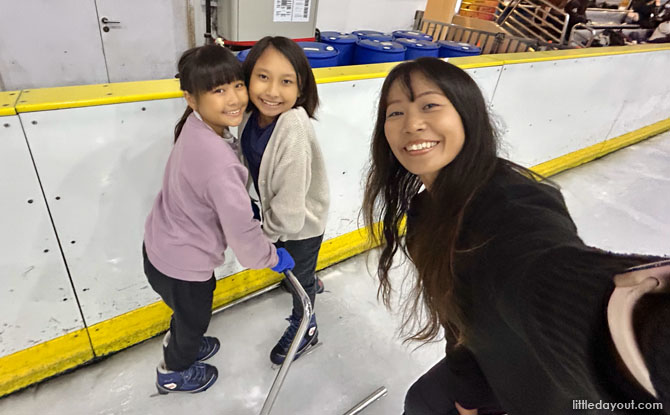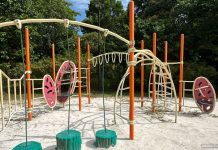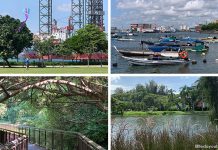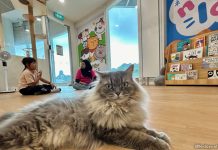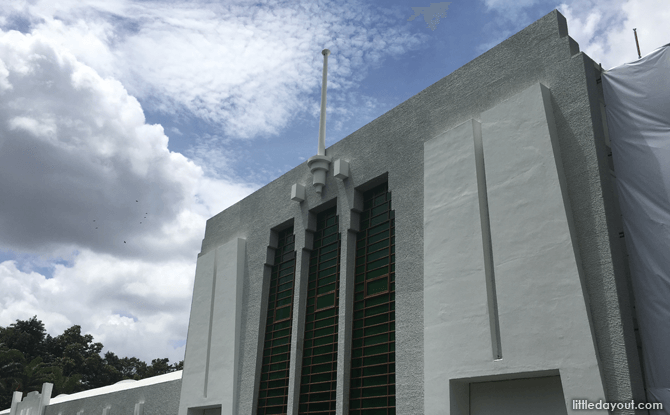
17 Feb 2017 Update – In a statement issued by Minister for Communications and Information Yaacob Ibrahim, Syonan Gallery: War and Its Legacies will be renamed Surviving the Japanese Occupation: War and its Legacies.
Even before it opening on 15 February 2017, the new gallery at the former Ford Factory had already attracted its share of controversy. Some were upset that the name of the new exhibition seemed to validate the three-and-a-half year Japanese Occupation when Singapore was renamed Syonan-to, one of the darkest periods in the country’s history.
Prime Minister Lee Hsien Loong even weighed in on the issue through his Facebook page, captioning one of his photos, “The name of the exhibition, “Syonan Gallery: War and Its Legacies”, at the Former Ford Factory in Upper Bukit Timah Road has understandably caused strong reactions. We cannot erase our history or bury the past. The exhibition is a reminder of a traumatic period in our history and the suffering our pioneers experienced when Singapore lost its freedom and even its name.”
All this underscores the deep-seated feelings that still surround this period in Singapore’s history – even 75 years after the fall of Singapore.
Year-end Holiday Camps: Discover Fun and Exciting Camps for Kids; Book Early
Farm Fright: Join City Sprouts For Their Halloween Bash On 26 Oct
We paid a visit to the gallery to discover what lies beyond the signboard outside.
Historic Former Ford Factory Building
The exhibition is housed in the historic former Ford Factory along Upper Bukit Timah Road. The Art Deco style building was the Ford Motor Company’s first Southeast Asian motorcar assembly plant. It opened in 1941 but production stopped soon after when the Japanese invaded Malaya. After the war ended, it carried on operating from 1947 up till 1980.
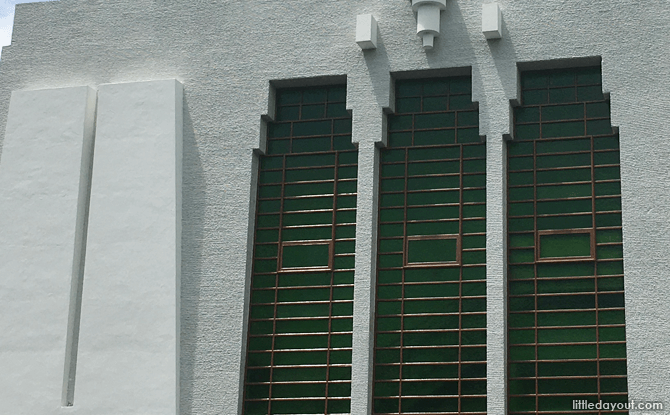
On 15 February 1942, after the British made the decision to surrender, the Surrender Party made their way from Fort Canning Hill to the Ford Factory at Bukit Batok Hill under a white flag.
It was here that the British formally surrendered to the Lieutenant-General Yamashita Tomoyuki at around 6.20 pm. Hostilities were set to cease by 8.30 pm.
Introduction
At the present day gallery, the exhibits are divided into four sections – Introduction, Fall of Singapore, Becoming Syonan and Legacies of War.
In the first section, you get to delve into the history of the Ford Factory and gain insights into prewar Singapore.
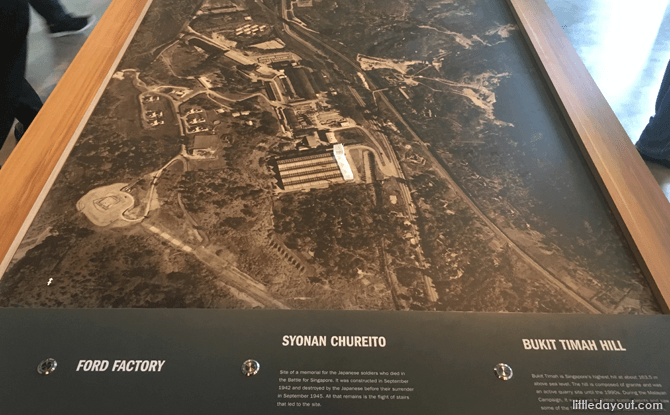
Today, the former Ford Factory building is surrounded by condominiums and busy roads. The old aerial photo shows how what it looked like back it the day. Press a button and landmarks on the photo-table light up for a clearer view.
Fall of Singapore
The next section goes deeper into the events leading up to the fall of Singapore from different viewpoints.
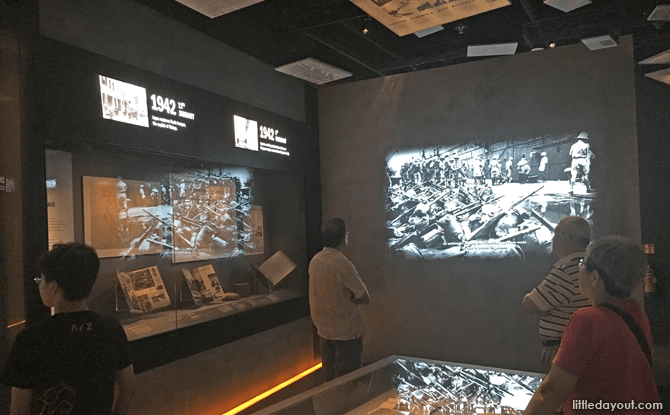
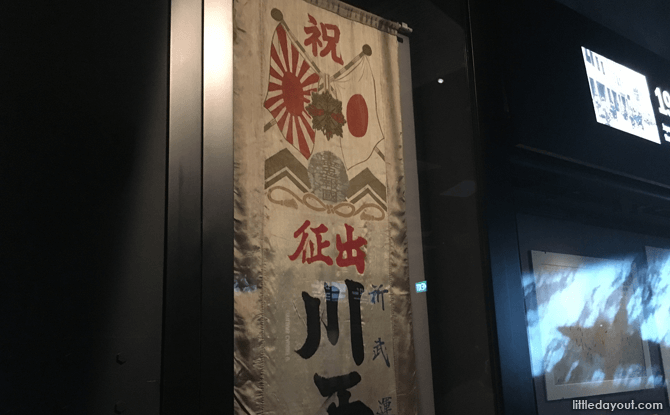
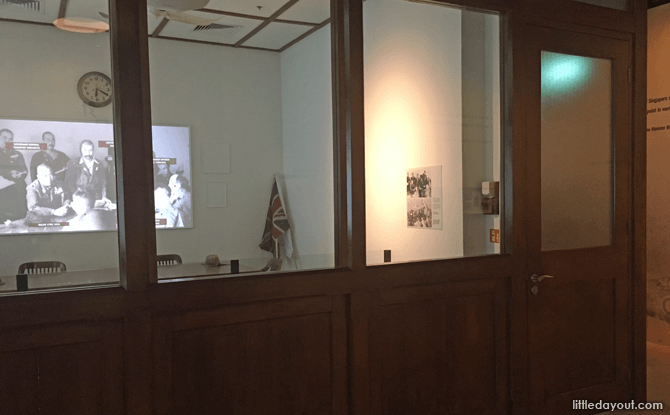
You can step into the room – just don’t try to make use of the wooden door as it is locked. Instead, go around the corner where an open doorway awaits.
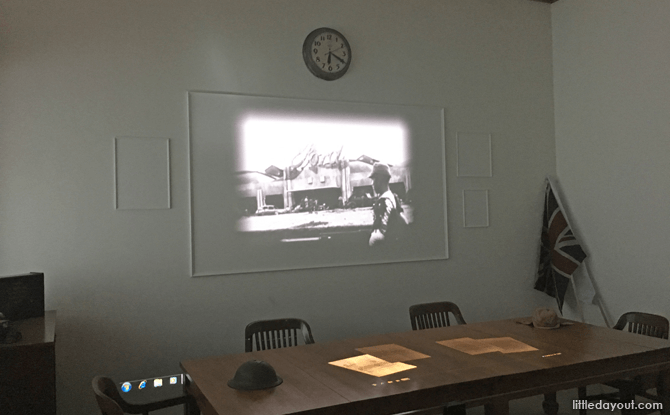
On the wall, the clock is set to 6.20 pm, the time of the surrender.
Becoming Syonan
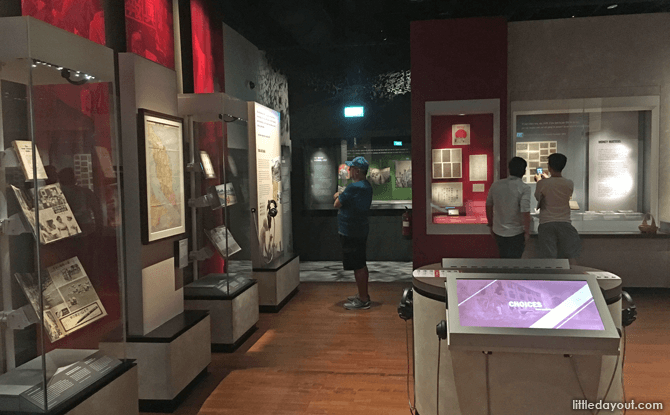
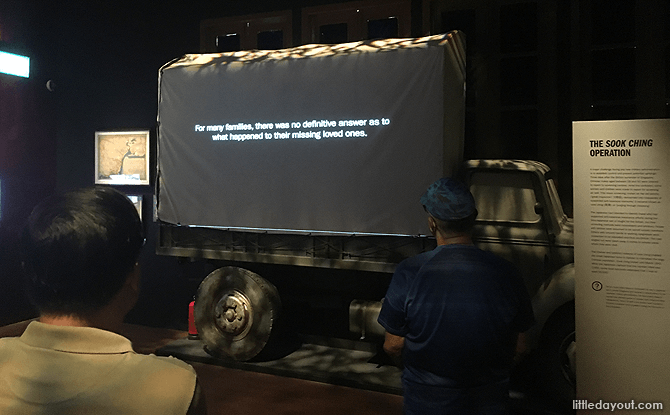
Common items and oral history accounts provide a personal view into life during the Occupation.
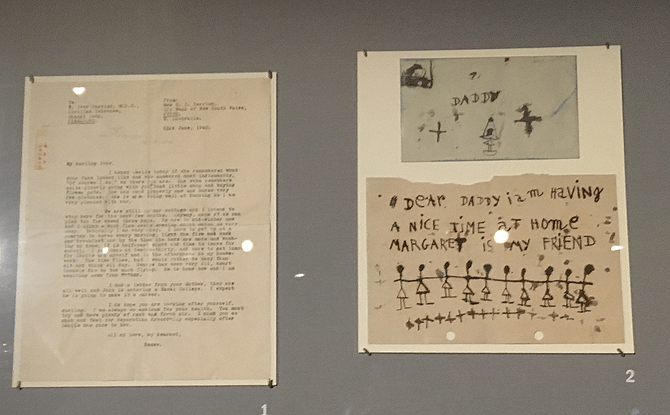
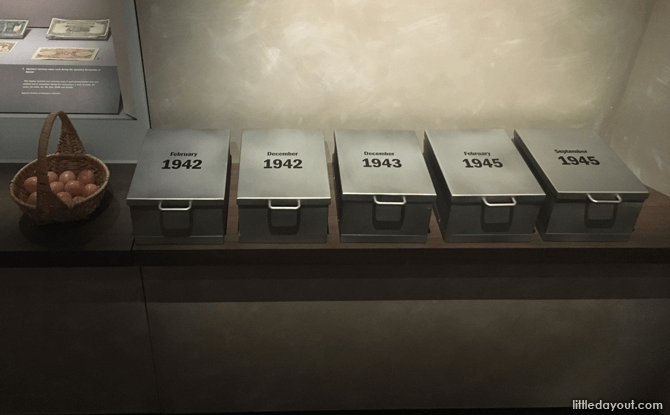
Legacies of War
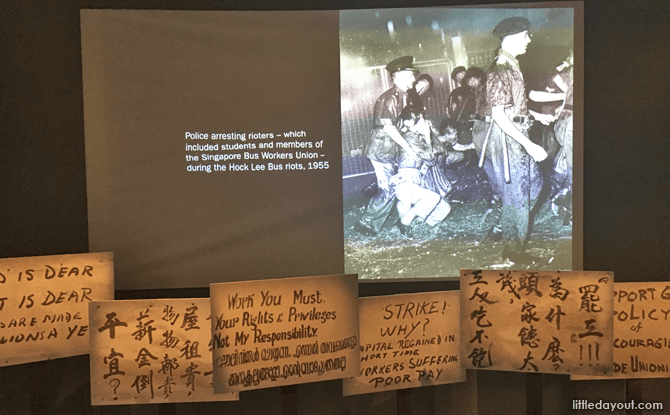
The exhibition ends with poignant oral narratives by those who lived through the war.
Syonan Garden
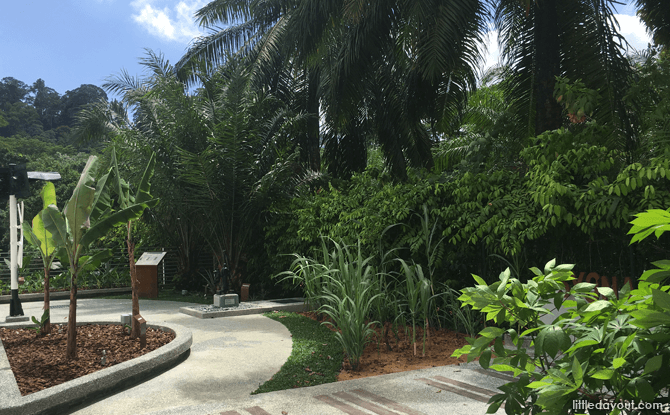
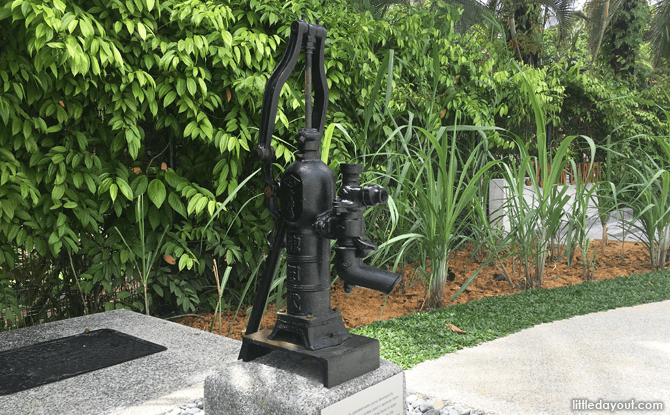
Taking Away Memories from the Old Ford Factory
For today’s younger generation, the events described in gallery may seem a world part. For others, it will bring back memories of stories told by parents and grandparents about the hardships, cruelty and suffering faced during the Japanese Occupation.
On the whole, we found the exhibits at Surviving the Japanese Occupation: War and Its Legacies to be intriguing and well presented. However, some effort will be needed to pause and take in the information found at the gallery.
While we don’t think it is good to dwell too long on this dark chapter in Singapore’s history, it is also important to remember the past and the lessons it can teach us. In this respect, we can appreciate the Surviving the Japanese Occupation: War and Its Legacies exhibition and its role in our collective memory.
Surviving the Japanese Occupation: War and its Legacies – An Exhibition at Former Ford Factory
Address: 351 Upper Bukit Timah Road, Singapore 588192
Opening Hours: Mon to Sat, 9 am to 5.30 pm; Sun, Noon to 5.30 pm
Admission: Free for Singaporeans and PRs, Singapore student pass holders, children under 6 and museum roundtable members. $3 for others.
Website
Docent-led tours will take place from 1 March 2017 onwards. On Mondays to Fridays, these will be held at 11 am and 2.30 pm. An additional 3.30 pm tour will take place on Saturdays. Tours will be held at 2.30 pm and 3.30 pm on Sundays.
It is also possible for schools and organisations to request for a tour. Use the booking form on the gallery’s website.


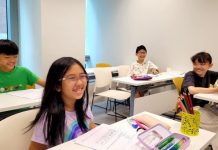





![[Updated] 53 Best Free Outdoor Playgrounds In Singapore For Kids 50 Best Free Outdoor Playgrounds In Singapore For Kids](https://www.littledayout.com/wp-content/uploads/outdoor-playgrounds-01-218x150.jpg)
